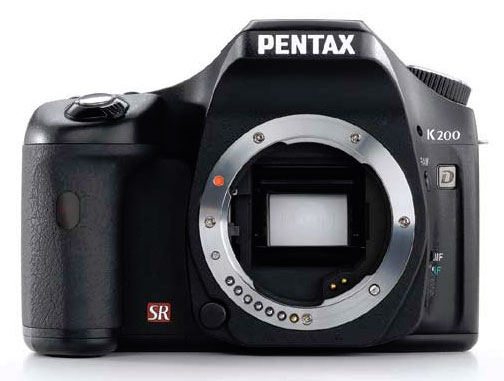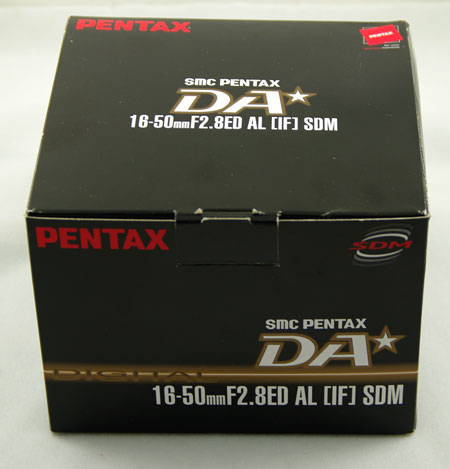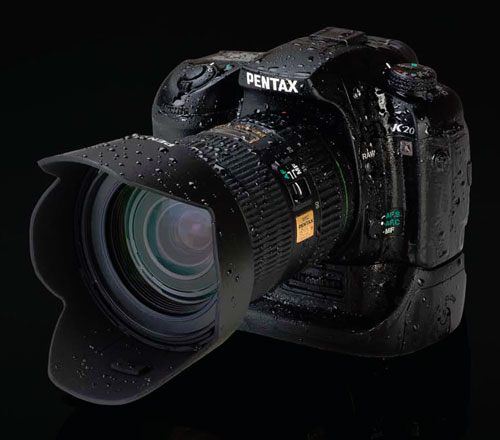SDM Motor Lens

Pentax announced they would introduce new motor lens technology, which they call DA* (pronounced DA star) SDM (Supersonic Drive Motor) when the K10D was launched about a year and a half ago. As you can see in the mount photo, there are two additional gold pins inside the mount that couple with the SDM lens motor. Without these pins the SDM lenses function like standard AF screw-drive lenses.

It was not until about five months ago that Pentax finally began shipping the new SDM motor lenses, and they require at least a K10D with an upgrade to firmware 1.30 for the motors to even work. As a result, almost no one took a closer look at the new Pentax motor lenses. Now with the K20D we have the first real opportunity to work with a Pentax motor lens, specifically the 16-50mm f2.8.
On a side note, we really wish the marketing guy who is so hell bent on using * would get over it (first "*ist D" and now "DA*"), because the realities in a computer world were not considered. * usually signifies a wildcard in computer lingo, which means these Pentax products with the clever little * name can't be searched in Google or other search engines. This makes it impossible (or at best very difficult) to find these specific Pentax products with a * in their name in a search engine or at a web retailer site. Clearly that wasn't the intent of Pentax, but someone in the company needs to realize it's a bad idea and not very helpful for their sales.

Back to the camera, we mounted the 16-50 DA* SDM and we were frankly blown away. We thought the lens was broken because we couldn't hear the autofocus motor at all during focusing. The focus was so fast we assumed it wasn't focusing but we quickly saw the lens was definitely focusing.
Our everyday cameras right now are a Canon 5D full-frame and 40D with Ultrasonic lenses and a couple of L lenses, and an Olympus E-3 with a Leica 25mm F1.4 and the new 12-60mm SWM lens. The Pentax DA* SDM is quieter than any of these cameras, including the 24-105mm Canon L. It is also subjectively as fast as or faster than any of these cameras with their best motor lenses. We were shooting test shots in my available darkness office and the DA* SDM AF performance was nothing short of remarkable.

The 16-50 f2.8 fast wide angle to short telephoto (24-75mm equivalent) features a lens motor and sealing against dust and moisture, just like the K10D and K20D camera bodies. At first glance, the street price of around $700 will seem very high until you compare it to similar offerings from Canon and Nikon. The 17-55mm f2.8 IS Canon will set you back $1000 or more and the Nikon 17-55 f2.8 is a healthy $1190. The Canon 16-35 f2.8 L is another comparable lens at $1370. By comparison the Pentax DA* 16-50mm f2.8 SDM, designed and built to similar Pro specs, is an absolute bargain.
This caused us to wonder how others would review the K20D. Most use the standard 50mm f1.4 lens from the manufacturer in testing Autofocus. The Canon 50mm is an Ultrasonic motor lens, while the Pentax 50mm is an old-style AF screw drive. Popular Photography modified their test procedure to accommodate the fast Olympus SWM motor in their E-3 review, but it is clear they didn't even bother to retest for the K20D and used older K10D launch AF numbers when SDM lenses were not even available. Unfortunately, that means their AF tests of the K20D are not comparable to Canon or Olympus or Nikon.

We are trying to determine how best to test AF to account for the improved performance of SDM. The point is that the first question for any review of the AF performance of the K20D should be whether it was tested with an SDM lens. If an SDM lens was not used the review is not measuring the K20D autofocus performance in an apples-to-apples comparison.










50 Comments
View All Comments
solar1 - Tuesday, March 11, 2008 - link
First let me give praise for covering aspects of this camera that few reviews bother taking.I did go to the japanese pentax website some time ago where they have absolutely stunning webpages for the K20D, but in Japanese. So with the funky google translation, I was able to get a bit of an idea on the new camera before it showed up in shops. I thought it was a mistranslation regarding this illustration function - it sounds really interesting. Please do show an image or two in your upcoming review... and thanks for bringing up the topic.
The Irish Patient - Tuesday, March 11, 2008 - link
Not a big deal, but the 10d used a pentaprism viewfinder instead of the more common pentamirror setup, and the viewfinder could be removed to use interchangeable focus screens.Does the 20d retain these features?
hiepbiz - Tuesday, March 11, 2008 - link
In fact, if you bought the Katz Eye one, you can switch it to the new K20D without any problem. Pentax does have my vote in backward compatibility department.The Irish Patient - Tuesday, March 11, 2008 - link
I wouldn't usually clutter up a forum with a "thank you" post, but your reply deserves an exception.The Katz Eye Focusing Screen you directed me to is exactly what I had hoped to find. OK, I'm a dinosaur, but I still prefer to focus manually as on my antediluvian Nikon. For those readers that have never seen what manual focus is supposed to look like on an SLR, the Katz screens have both the central split prism and a surrounding microprism ring.
I said in my original post that the ability to swap out the focusing screen on the k20d was not a big deal, but now it's a very big deal for me. I just hope I can get a decent price on my XTi now that the XSi has been announced.
Wesley Fink - Tuesday, March 11, 2008 - link
Yes the K20D continues to use a real pentaprism and it does feature interchangeable focusing screens. The lower-end K200D will use a pentamirror like the Sony A350/A300/A200, Canon XSi/XTi, and Canon D60/D40x/D40spazmedia - Tuesday, March 11, 2008 - link
I still don't get why camera makers insist on increasing megapixel count on prosumer cameras. This makes little difference when printing at low iso and at high iso just makes things worse. The sensor made by Samsung look interesting, if only they did not increase the resolution.also does the K20 display iso setting in the viewfinder?
Wesley Fink - Tuesday, March 11, 2008 - link
I remember when 1 megapixel was touted as all one could ever want or use in a digital camera :) Pentax claims that the 14.6 megapixel resolution matches the resolution of 35mm film. Others might claim 35mm film resolution is a bit higher than this. I really don't think the resolution wars will ever be over, but like reducing manufacturing traces in computer CPUs each improvement in speed introduces a new set of problems to be resolved.The resolution wars are slowing a bit right now as we do approach 35mm resolution, but anyone who shoots medium format or view cameras knows there is much more resolution beyond 35mm film. It will be great when we can shoot those higher resolutions with a small digital camera. Of course hitting the 35mm film resolution range is also hitting the resolving limit of most current lenses, so future lenses will require even better optics.
We have already seen that the develpoing move to full-frame by Sony, Nikon, Canon is requiring the best optics available as average lenses are obviously inferior on those bigger, higher-resolution sensors. Future resolution increases will likely require an optics quality revolution to have much relevance.
madgonad - Tuesday, March 11, 2008 - link
35mm film is actually about 10MP. Maybe a little less for lower quality films.The motion picture film libraries have been scanning at the maximum discernible resolution for a while to create digital masters of the movie archives. They are scanning at 4K resolutions which is the equivalent image of about 10MP. You can shoot at higher resolutions but eventually all you are doing is just magnifying the image and requiring more and more light for proper exposure. I am not actually sure what human vision translates into megapixels.
yyrkoon - Tuesday, March 11, 2008 - link
Human eye 'MegaPixel' equivalent in a camera last I read was somewhere above 32 MP(some argue 64MP, some argue higher). wikipedia claims 81MP.http://en.wikipedia.org/wiki/Eye">http://en.wikipedia.org/wiki/Eye
Personally, I am happy with 6MP, but very unhappy with the current Dynamic range capabilities of ALL cameras. From what I have read, the human eye has a static contrast ratio of 100:1(about 6.5 stops), but a dynamic contrast ratio of 1,000,000:1 (about 20 stops). All this is what I have read from wikipedia, but I have read other 'articles' that have claimed similarly.
Wesley Fink - Tuesday, March 11, 2008 - link
I completely agree that the biggest challenge in today's digital cameras is dynamic range. Another reader chided me for not spending some time talking about the dynamic range expansion feature on the K20D that allows expansion at the top and bottom of the dynamic range. We will try to cover this in the full review.I could also agree with you about the limitations of film dynamic range, except that I find digital imaging is still far more limited in dyanamic range than film. When it reaches film level I can expand my complaints.